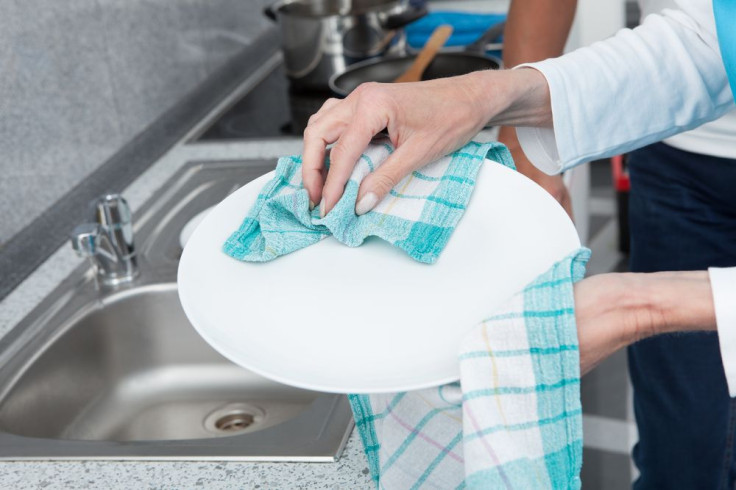Dish Cloths Should Only Be Used For One Thing, And Washed Often

Any environmentally conscious homeowner — or apartment renter, in this case — knows that using a dishcloth for drying hands after washing dishes (or washing hands) will save paper towels. As its name suggests, many people also use dishcloths for drying dishes — and wiping tomato sauce off a pot or a spill off the counter. You can imagine, then, that those dishcloths are picking up a lot more than they’re meant to, including bacteria.
A new study from the University of Arizona found just that; all those times you wiped your kitchen surfaces with a towel, you were also picking up bacteria, which made themselves at home in the damp cloth. They even had some tomato sauce to eat. And once you’ve finished washing dishes, there’s a good chance you passed that bacteria onto the dishes’ clean surfaces by drying them with the same cloth.
The study found that 89 percent of dishcloths and kitchen sponges had some kind of coliform bacteria, which comes from the feces of warm-blooded animals, and of course, humans. Though not all coliform bacteria are dangerous, they tell those in charge of drinking water that disease-causing organisms could be in the water system. However, E. coli, the bacteria that can cause illness like diarrhea, urinary tract infections, and respiratory illness, was found in 25 percent of sponges and cloths.
“You may think you are cleaning the counter where food will be placed,” Kelly Reynolds, of the university’s Zuckerman College of Public Health, told The Huffington Post. “But if you are using a dirty kitchen rag, you may actually be introducing hundreds of thousands of bacteria.” Another one of the coliform bacteria found were Salmonella, the bacteria behind an outbreak last year that sickened 430 people throughout 23 states and Puerto Rico.
The researchers collected 82 towels from homes in five cities in North America — Chicago, Tucson, Ariz.; New Orleans, Orlando, Fla.; and Toronto, Canada — and questioned each homeowner about the age of their towel, how often they washed it, how often they used it, and the number of days since the towel was last washed. After testing the towels, they found that New Orleans had the highest count of bacteria per towel, while Orlando had the lowest. Also, Tucson had the highest number of coliform bacteria per towel, while Orlando had the highest number of E. coli.
To counter this accumulation of bacteria, the researchers suggested “frequent replacement or decontamination of kitchen towels.” Simply washing the towels in the sink with some detergent won’t work, because bacteria like E. coli and Salmonella are resilient, and can repopulate them within 24 hours. Instead, dishcloth users can soak the cloths in 4,000 milligrams per liter of bleach for two minutes. Although this won’t guarantee cleanliness, homeowners can take further steps to ensure cleanliness, such as washing hands thoroughly, and not washing chicken — the bacteria-laden water splashes everywhere.
Source: Gerba C, Tamimi A, Maxwell S, Sifuentes L, Hoffman D, Koenig D. Bacterial Occurrence in Kitchen Hand Towels. Food Protection Trends. 2014.



























